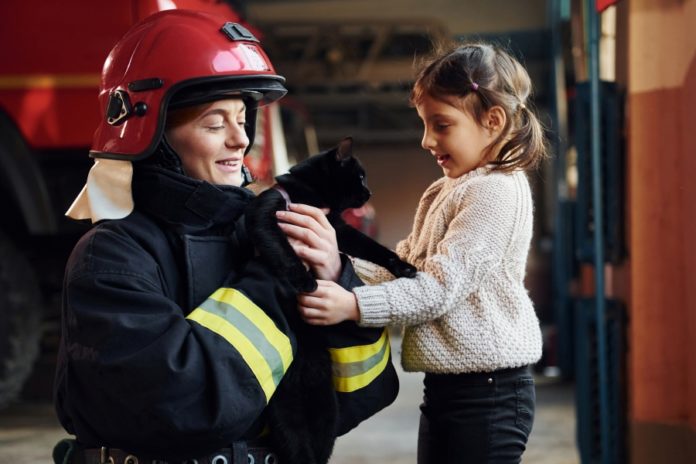5 pet fire safety tips

Keeping your pets in mind when practicing fire safety with your family ensures that everyone gets out in case of a fire.
May is National Pet Month and in honor of our beloved dogs and cats, we’re going to talk about their safety. According to the American Humane organization, each year, more than 500,000 pets are affected by house fires, with 1,000 house fires started by pets each year. Here are some tips to keep top of mind when it comes to your pet’s safety!
1. Include pets in your fire safety plan
Make sure to include your pets in your family escape plan and include your furry friend as you practice it every six months. Assign a specific family member to be in charge of each pet to help ensure a safe evacuation.
2. Create easy access to your pets’ leashes and collars
Have leashes and collars stored near the entrance of your home so you can quickly grab them on your way out the door.
3. Don’t burn candles unattended
Pets are curious but certainly not cautious. Wagging tails and pawing kitties can create fire safety issues by haphazardly knock over candles. To help prevent fire incidents, consider flameless candles for added ambiance.
4. Install appropriate alarms and detectors
Help protect your home and loved ones in the event of a fire or carbon monoxide incident by installing combination smoke and carbon monoxide alarms with a 10-year sealed battery. Alarms should be installed on every level and in each bedroom as well as tested regularly.
5. Secure loose wires
Help avoid electrical fires by securing loose wires and running long cords behind couches or other out-of-reach locations to prevent them from being chewed.
A little forethought goes a long way in making sure all members of your family stay safe!




